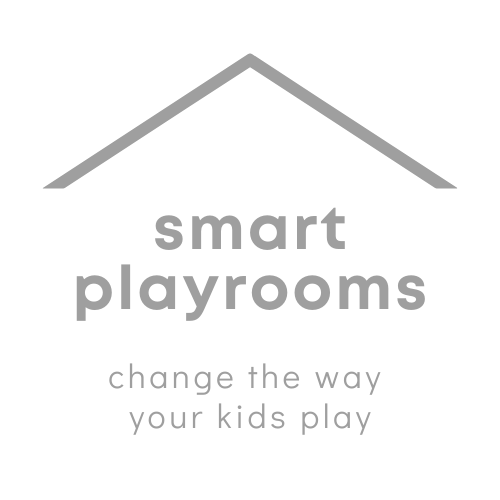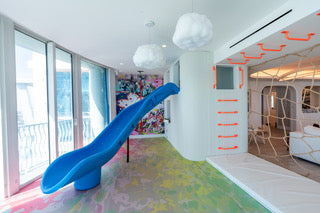Creating a safe and supportive environment is paramount for children with autism to thrive and develop. A well-designed playroom, infused with thoughtful autism playroom ideas, can serve as a sensory-rich sanctuary where children can explore, learn, and participate in therapeutic activities. This guide aims to provide compassionate and practical tips for crafting a playroom that is meticulously tailored to meet the unique needs of children with autism. By focusing on creating a space that encourages sensory exploration and learning in a comforting and secure setting, parents and caregivers can foster an environment that supports the holistic development of children with autism.
Understanding Autism Spectrum Disorder (ASD)
Before diving into the design of a playroom for children with autism, it is crucial to have a basic understanding of Autism Spectrum Disorder (ASD). ASD is a developmental disorder that affects social communication and behavior. Children with autism may have difficulty with social interactions, communication, sensory processing, and repetitive behaviors. Designing a playroom with these challenges in mind can help create a supportive environment where children with autism can feel comfortable and thrive.
Creating a Calm and Comfortable Space
When designing a playroom for children with autism, prioritize creating a calm and comfortable environment free from sensory overload. Choose soothing colors for the walls and decor, such as soft blues, greens, or neutral tones, that promote relaxation and tranquility. Minimize clutter and avoid overwhelming patterns or visual distractions that may cause sensory overload. Consider using soft lighting, natural materials, and comfortable furniture to create a cozy and inviting space where children feel safe and at ease.
Incorporating Sensory-Friendly Features
Sensory processing difficulties are common among children with autism, so it is essential to incorporate sensory-friendly features into the design of the playroom. Provide a variety of sensory experiences to engage different senses, such as tactile, auditory, visual, and proprioceptive. Consider including sensory-friendly toys and equipment, such as textured balls, sensory swings, tactile mats, and noise-canceling headphones. Create designated sensory zones within the playroom where children can explore and engage with sensory materials at their own pace.
Designing for Safety and Accessibility
Safety is paramount when designing a playroom for children with autism. Minimize potential hazards and ensure that all furniture, toys, and equipment are securely anchored and childproofed. Pay attention to the layout of the playroom to create clear pathways and open spaces for safe movement and exploration. Consider incorporating visual cues and labels to help children navigate the space independently. Make sure that the playroom is easily accessible for children with mobility challenges or sensory sensitivities.
Promoting Structured and Predictable Play
Children with autism often thrive in structured and predictable environments, so it is essential to incorporate elements of routine and predictability into the design of the playroom. Create designated areas for different types of play, such as imaginative play, sensory play, and quiet time. Use visual schedules, timers, and routines to help children understand expectations and transitions within the playroom. Provide clear boundaries and guidelines for behavior to promote a sense of safety and predictability.
Provide Opportunities for Movement and Physical Activity
Physical activity is vital for the overall health and well-being of children with autism. Design a playroom that offers plenty of opportunities for movement and gross motor play. Include equipment such as swings, monkey bars, and balance beams to encourage active play and physical development. Create designated areas for activities such as jumping, climbing, and rough-and-tumble play to support sensory integration and motor skills.
Incorporate Visual Supports
Visual supports are essential tools for children with autism to communicate, understand concepts, and navigate their environment. Incorporate visual supports such as picture schedules, visual timers, and communication boards into the design of the playroom to enhance communication and support learning. Use visual cues and prompts to guide children through activities and reinforce positive behaviors.
Fostering Social Interaction and Communication
While children with autism may struggle with social interaction and communication, the playroom can be a valuable setting for fostering these skills in a supportive and non-threatening environment. Include opportunities for cooperative play, turn-taking, and social interaction through games, group activities, and structured play. Use visual supports, social stories, and role-playing to help children learn and practice social skills in a fun and engaging way. Encourage positive social interactions and celebrate each child's unique strengths and abilities.
Offer Quiet Spaces for Relaxation
In addition to active play, it is essential to provide quiet spaces where children can retreat and relax when needed. Designate a cozy corner or nook in the playroom with soft seating, cushions, and blankets where children can unwind and recharge. Consider adding calming sensory elements such as dim lighting, soothing music, and aromatherapy diffusers to create a peaceful and calming atmosphere.
How Smart Playrooms Can Help
At Smart Playrooms, we understand the importance of creating an inclusive and supportive environment where children with autism can thrive. Our team of experienced designers are dedicated to creating personalized play spaces that cater to the specific needs and interests of each child. We take a holistic approach to design, incorporating sensory-friendly features, structured play opportunities, and therapeutic elements to promote engagement, learning, and social interaction.
Personalized Design Solutions
One of the key benefits of working with Smart Playrooms is our personalized custom approach to design. We take the time to understand the unique needs, preferences, and sensory sensitivities of each child with autism, as well as the dynamics of their family and home environment. We collaborate closely with parents, caregivers, and therapists to create a customized playroom design that addresses the specific challenges and goals of the child. You can choose to work with us virtually by purchasing one of our Edesign packages or through our Bespoke service, which is a collaborative immersive hands-on approach with our team.
Sensory-Focused Design
Sensory processing difficulties are common among children with autism, so we prioritize creating sensory-rich environments that promote comfort and engagement. Our designers carefully select materials, colors, textures, and lighting to create a calming and inviting atmosphere that appeals to all senses. We incorporate sensory-friendly toys, equipment, and activities that encourage exploration, self-regulation, and sensory integration.
Structured Play Opportunities
Children with autism often thrive in structured and predictable environments, so we incorporate elements of routine and predictability into our playroom designs. We create designated areas for different types of play, such as imaginative play, sensory play, and quiet time. We use visual supports, schedules, and timers to help children understand expectations and transitions within the playroom, promoting a sense of safety and predictability.
Therapeutic Elements
Our playroom designs also include therapeutic elements that support the development of essential skills, such as fine motor skills, gross motor skills, social skills, and communication skills. We incorporate equipment and activities that target specific areas of development, such as climbing structures, balance beams, sensory bins, and communication boards. We collaborate with occupational therapists and other professionals to ensure that our designs are therapeutic, effective, and tailored to the individual needs of each child.
Continued Support and Guidance
At Smart Playrooms, our commitment to your child's development does not end with the completion of the design process. We provide ongoing support and guidance to help you implement and maintain the playroom design effectively. We offer resources, tips, and strategies for maximizing the therapeutic benefits of the playroom and promoting engagement and learning. Our team is always available to answer questions, address concerns, and provide assistance as needed.
Empowering Children with Autism Through Thoughtful Design
Designing a playroom for children with autism is a journey that requires patience, creativity, and compassion. With the right resources and support, you can create a space that nurtures growth, development, and happiness for your child. Smart Playrooms is here to help you every step of the way, from personalized design solutions to ongoing support and guidance. Together, we can empower and develop children with autism to explore, learn, and thrive in a sensory-rich and supportive environment.



Leave a comment
This site is protected by reCAPTCHA and the Google Privacy Policy and Terms of Service apply.